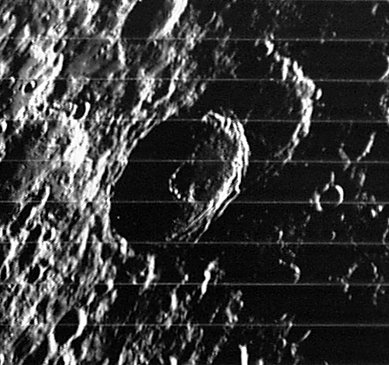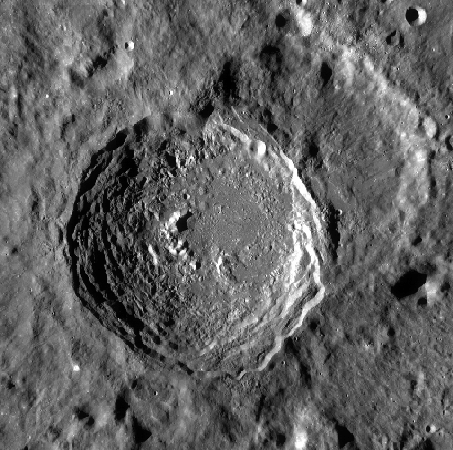Vavilov
Contents
[hide]Vavilov (aka Fratres Vavilovi)
|
Lat: 0.8°S, Long: 137.9°W, Diam: 98 km, Depth: km, Rükl: (farside), Copernican |


Left: LOV-030-H3
Right: LRO WAC
Images
LPOD Photo Gallery Lunar Orbiter Images Apollo Images
Frame 3 and Frame 3c, made by ZOND 6, show Vavilov (or: Fratres Vavilovi) at the centre of both images.
Research: Danny Caes
Maps
(LAC zone 88B1) USGS Digital Atlas PDF
Description
Description: Wikipedia
Additional Information
- Possible oblique impact – downrange SW or NE, dark collar (impact melt like Tycho) most evident to ESE, width 0.6 crater diameter. [Kirata et al LPSC 30: 1350]
- Central peak composition: A, GNTA1, GNTA2, AGN (Tompkins & Pieters, 1999)
- TSI = 30, CPI = 15, FI = 20; MI =65 Smith and Hartnell, 1973
Nomenclature
- The IAU crater name honors two men:
- Nikolai Ivanovich Vavilov (November 25, 1887 – January 26, 1943) was a prominent Russian botanist and geneticist best known for having identified the centres of origin of cultivated plants. He devoted his life to the study and improvement of wheat, corn, and other cereal crops that sustain the global population.
- Sergey Ivanovich Vavilov (March 24, 1891 – January 25, 1951) was a Soviet physicist, the President of the USSR Academy of Sciences from July 1945 until his death. His brother Nikolai Vavilov was a famous Russian geneticist. Vavilov founded the Soviet school of physical optics, known by his works in luminescence.
- Vavilov was among the long list of farside names approved by the IAU in 1970 and published in Menzel, 1971.
- Called Fratres Vavilovi on the First and Second Complete Moon Map, 1967/ 1969 (Shternberg Astronomy Institute). Research: Danny Caes.
- In the planning for Apollo 8, the first manned circumlunar mission (1968), this crater (which did not then have an official name) was referred to informally as Debus, a name subsequently approved for a completely different farside crater. Also, between Vavilov and Kibal'chich (west-northwest of Vavilov), is a currently unnamed crater which was then informally known as Shea. (source: Phil Stooke's LPOD).
LPOD Articles
Bibliography